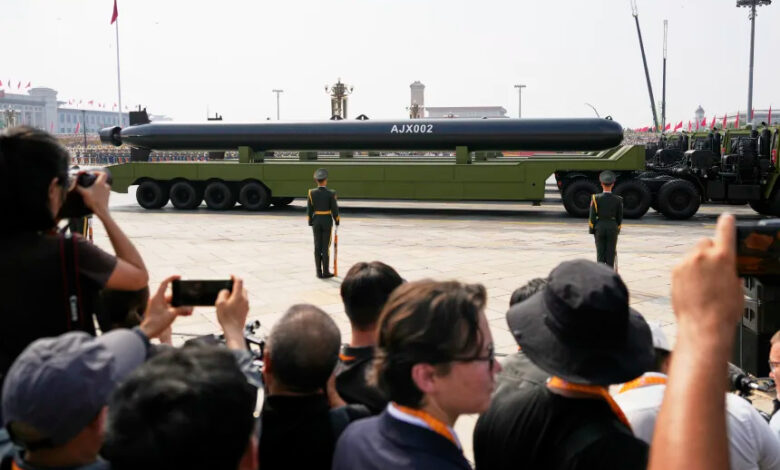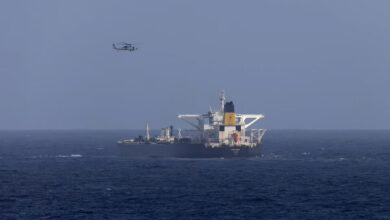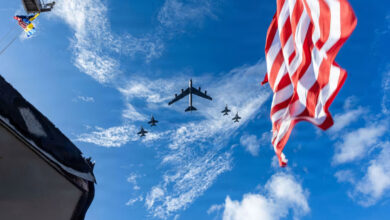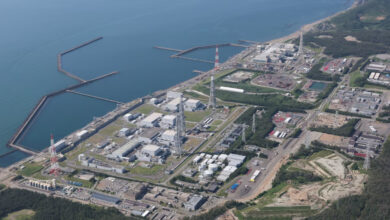
The huge military parade through central Beijing on Wednesday was a deliberately fearsome display of weaponry designed to send a message that Xi Jinping’s vision of a new world order with China at the apex will be backed up with high-tech arms that would seem, in many cases, to be ahead of its rivals.
While much post-parade attention will be focused on new long-range nuclear-armed weapons – like the DF-61 intercontinental ballistic missile – what may be even more important in the long run are weapons like the new mobile truck- and ship-mounted laser air defense weapons.
If these are already deployed in numbers in the People’s Liberation Army forces (PLA), as China indicated in pre-parade press conferences, they could present real problems for any adversary’s ability to blunt Chinese military movements around the region.
But there are caveats, and it’s not time to call the PLA the world’s preeminent military just yet.
Here’s what we learned from today’s parade.
Parade highlights
The PLA rolled out a remarkable amount of hardware down Beijing’s most famous thoroughfare, the Avenue of Eternal Peace – so much so that it was hard to focus on one weapon before the next rolled by.
But some certainly stood out, including the DF-61, a huge intercontinental ballistic missile (ICBM) carried on an eight-axle truck that would be the PLA Rocket Force’s first new ICBM since the DF-41 was introduced at a 2019 military parade.
Missiles with hypersonic glide vehicles (HGVs) were also highlighted.
HGVs can carry warheads at speeds greater than five times the speed of sound with irregular flight trajectories that can vex missile defenses.
An impressive array of drones were also on display, from extra-large unmanned submarines to aircraft that can fly as “loyal wingmen” to the PLA Air Force’s state-of-the-art stealth fighters.
Ground drones, some armed with machine guns, others suited for mine-clearing or logistics, were also in the formations.
And then there were the lasers.

The PLA showed two versions, one massive one designed for naval air defense, another that looked smaller and truck-mounted for to protect troops on the ground.
Lasers are among a class called “directed energy weapons,” which can also include high-powered microwave systems. Rather than using projectiles for a kinetic kill, these weapons rely on electromagnetic energy to disable a target through heat, disruption of internal electrical systems, or blinding of sensors such as optics and radar.
Directed energy weapons are more economical than kinetic weapons, with a shot from a laser costing just a fraction of a bullet or missile. Logistics are easier too as heavy metal projectiles don’t need to travel with the weapon, just its energy source.
An edge in industrial capacity
The huge volume of military hardware exhibited shows that China has the industrial might to back up its words, and perhaps eventually enforce Xi’s vision of the world.
It’s the kind of industrial capacity the US put together to win World War II, the end of which Wednesday’s parade was said to commemorate.
But while US industry spelled the end of the Axis powers 80 years ago, America now doesn’t have the capacity to turn out weaponry in the numbers that China can.
“What the Chinese are demonstrating here is an ability to develop advanced military capabilities by themselves, deploy them operationally and do it faster than what you’re seeing happen in the West,” said Malcolm Davis, senior analyst in defense strategy at the Australian Strategic Policy Institute (ASPI). “And also do it in larger volume in terms of sheer numbers of weapons deployed.”
Numbers leaning toward Beijing
An analysis published by the Center for Strategic and International Studies on the eve of the parade showed some of the math tipping in Beijing’s favor.
China’s defense spending has increased 13-fold in the past 30 years, according to the CSIS report, authored by Matthew Funaiole and Brian Hart, fellows in the CSIS China Power Project.
While Beijing still spends only about a third of what the US does on defense, it’s been closing the gap rapidly, cutting it in half in the past 12 years, according to the report.
But regionally, the defense spending gaps are not even close.
“China towers over its neighbors, spending five times as much on defense as Japan and nearly seven times as much as South Korea—two key US allies in the region,” the CSIS report said.
The starkest difference with the US comes at sea.
China is expected to have 48% more battle force ships than the US by 2030, the report says.
A 2023 paper by a professor at the US Naval War College, looking at the history of naval wars, found that the bigger fleet almost always wins.
Some have said the US can maintain an edge through technology like AI-powered drones. But Wednesday’s military parade showed that might be a false hope.

The PLA’s formations were packed with drones – for combat on the ground, in the air and at sea.
“The unmanned systems that the Chinese are displaying today are quite significantly advanced. They seem to be more advanced in some respects than what we’re seeing in the West, and they’re in operational service,” said the ASPI’s Davis.
And those are just for offensive combat roles.
Drone defense, through the aforementioned lasers, for example, may also be leaning in Beijing’s favor.
“We’re basically seeing before us what the Chinese describe as intelligent warfare,” said Ankit Panda, Senior Fellow at the Carnegie Endowment for International Peace. “You see a lot of autonomous capabilities, network capabilities, modern 21st century warfighting systems.”
The value of experience
While the formations parading through and above Beijing on Wednesday provided startling visuals, putting them together into a coordinated fighting force requires a lot that couldn’t be seen.
“China famously hasn’t fought in a proper high-intensity conflict, arguably since the Korean War, certainly since the Sino-Vietnamese war (in 1979). So, what does that tell us about their ability to prevail? As we learned from Russia’s experience in Ukraine, you can’t just count the beans,” said Panda.
Meanwhile, by way of comparison, it’s hard to argue with the US military’s ability to put firepower on target.
The US strike on Iranian nuclear sites in June, when seven B-2 stealth bombers dropped 14 of the world’s most powerful conventional weapons on target while not drawing any counterfire, is hard to imagine within China’s current abilities.

For one thing, the PLA Air Force has yet to show a stealth bomber in the B-2’s category, although one is said to be in the works. Even then, the next generation US bomber, the B-21, is already in the prototype stage.
So, there’s a wariness in the analyst community, even after the impressive show in Beijing Wednesday.
Retired Australian Army Maj. Gen. Mick Ryan said he believed the US remained the strongest military in the world, “but probably by a lesser margin than it has been for many decades” with China closing the gap.
“The Chinese military is very technologically sophisticated… but most importantly, it just about builds everything it needs indigenously,” he told CNN, adding that it means Beijing could not be “coerced” by foreign weapon suppliers.
But he noted none of the weapons on display have been tested in combat.
“Impressive on the surface, parades are not a good indicator of military effectiveness,” Ryan said.




